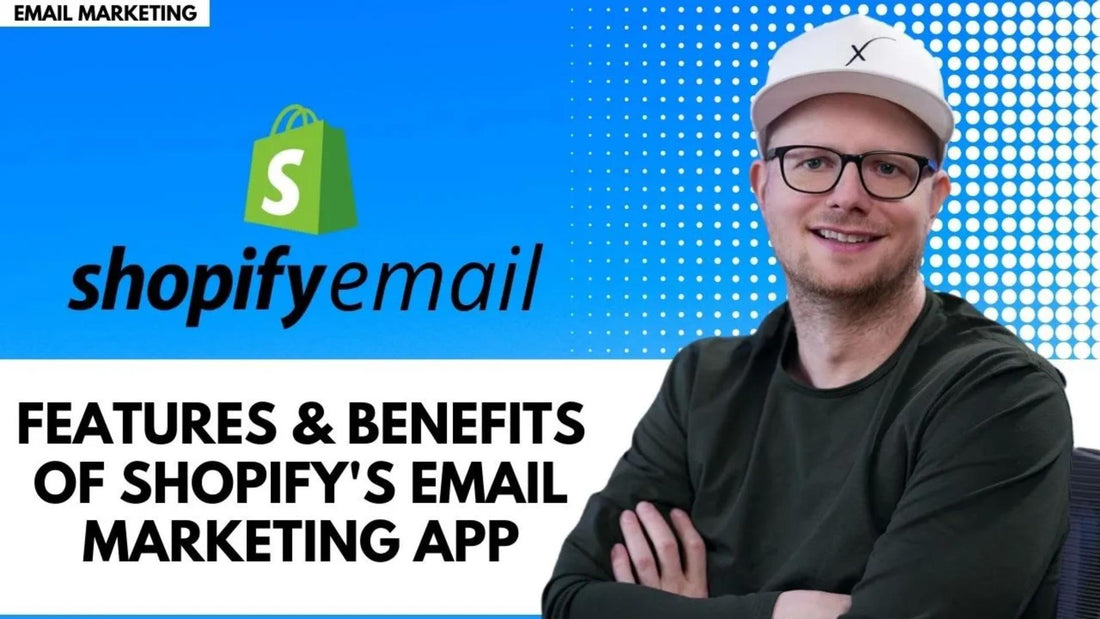
Shopify Email: Features & Benefits of Shopify's Email Marketing App
Share
Continuing our series, we introduced Shopify Email last time with a quick overview of the functions.
We will get a little deeper today to break your fear and satisfy your excitement about starting your first campaign.
You know I always try to intrigue your designing skills, so you don’t have to hire anyone on a thin budget.
The blog will guide you through the fundamentals of creating a campaign and designing a template then review and schedule.
Upload your subscribers list and let’s dig in.
Creating Campaigns
If you already installed Shopify Email, you can access it on the sidebar under apps.
Once you click on it you can choose whether to view past campaigns or create a new one.
It will notify you about the remaining emails in your free plan.
Then you can pick an email template based on various functions like product restocking, upcoming events, new arrivals, and installments.
You shouldn’t necessarily find a typical template for your email sequence, but we can improvise one together.
Pick a template, then choose your subscribers list, you can actually include yourself in one of those for testing.
Make sure to send for only customers who agree to receive marketing emails, so you don’t get a higher spam rate.
Write a catchy subject line to get a decent click-through rate, can add a personalization for calling the email receiver by the first name.
And a preview text to get them hooked.
Remember to use a professional email service to look good too!
Designing the Templates
Think with me about how you like the experience to feel and look.
Do you want it to be snappy? Or thorough?
Let’s start with the header, you want something clean with your logo, and a transparent PNG to layer over your email without extra spacing or weird coloring.
You can a couple of buttons that redirect to specific sections of your website.
The footer must have an unsubscribe button if people don’t feel comfortable.
You can freshen it up with a button redirecting to your social media channels.
Moving down to the header, you should feature a marketing message with a big font size that looks reasonable in the mobile view.
Followed by an elaboration on your selling pitch.
Let’s say the email is about a discount on a specific product.
You can add a section for the product or even a couple of products as you like.
It gets added with the product picture and the brief description and specs.
And a CTA (call-to-action) button to buy.
You can add different sections like discounts, gift cards, multicolumn, images with text, and dividers.
It’s preferable to upload your images with a meaningful name and an Alt text referring to the image’s content.
Use your colors wisely to utilize contrast that lures the image to specific points, without overdoing it which results in an annoying blend of colors that looks really bad.
The rule is three colors and three fonts.
The fonts include the variation of normal, bold, and italic.
It ought to be consistent with your brand, don’t use a font on social media to change it in emails while the logo font is different from all of that.
It should be readable too without any tangling that makes you feel dyslexic.
Still deciding on your brand identity, custom a hair brand logo from Private Label Branding.
Reviewing, testing, and Scheduling
Once you finalize the campaign you should save it, don’t publish right ahead, you might want to get a second opinion or look at it later with a fresh eye.
You can schedule it using Shopify AI recommendations or as the automated flow conditions suggest.
But don’t send too many emails so people don’t subscribe or mark you as spam.
You should also send the email to yourself to detach your judgment and to observe its details on your phone like a customer.
Scroll over and over to see where it has gone wrong.
Do it with each adjustment to make sure it’s ready to go live.
The dashboard is going to tell you the costs of your emails along with the orders and the sales.
The term session states the number of unique viewing times people spend reading the email.
You can archive your emails if they aren’t due any time soon to focus on your priorities.
Next blog, I’m going to tell you about the hidden pros and cons of the Shopify Email app.
Check my book Fearless Beauty to be a better hair business leader!

